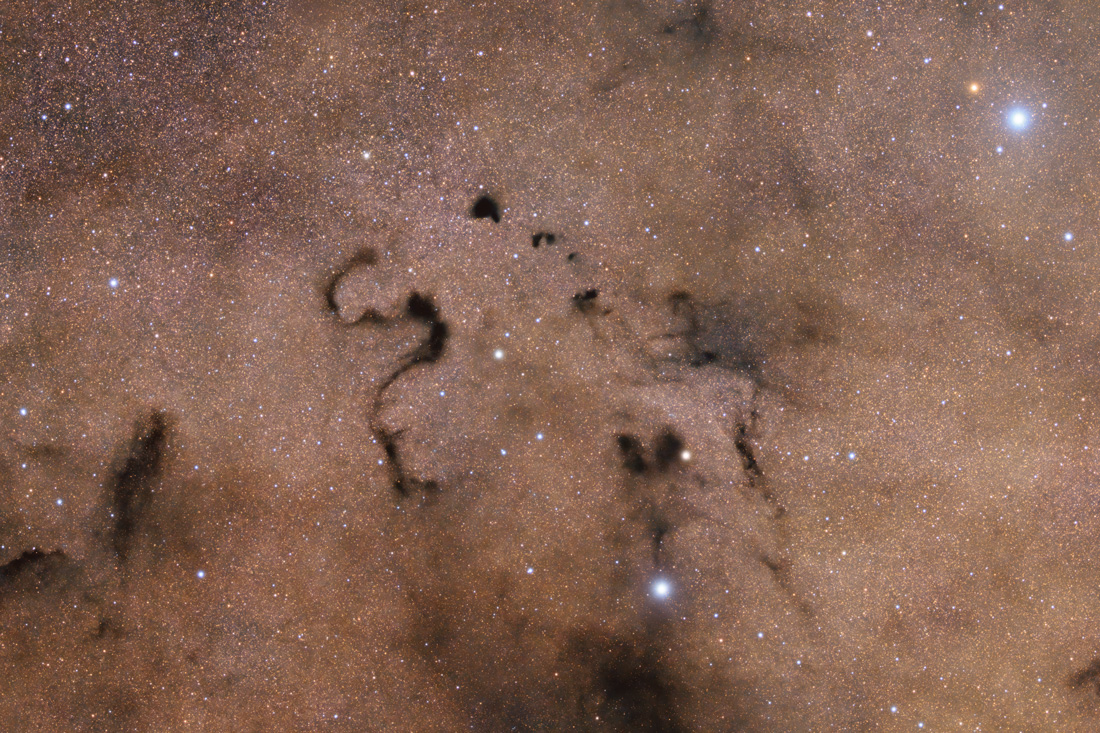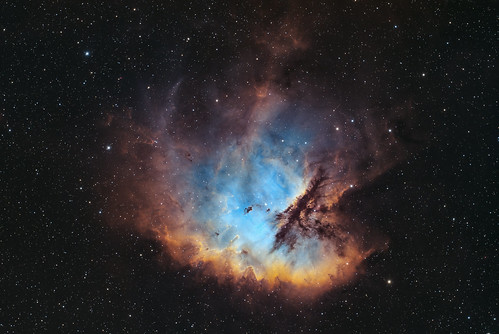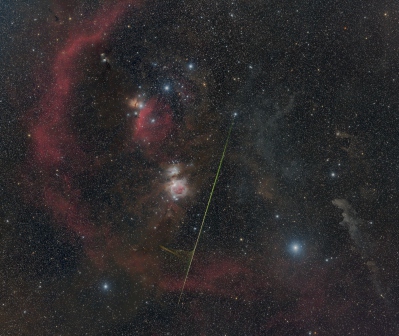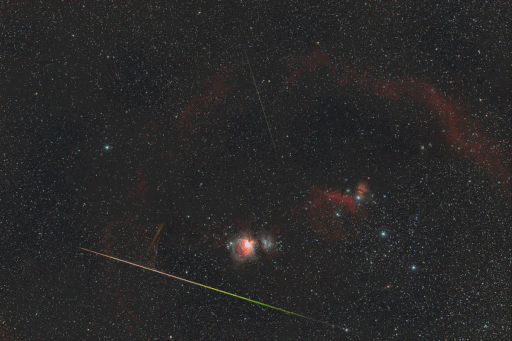Page 1 of 3
Submissions: 2023 November
Posted: Wed Nov 08, 2023 9:16 pm
by bystander
__________________________________________________________________________________________________
Please post your images here.
Please see
this thread before posting images; posting images demonstrates your agreement with
the possible uses for your image.
If hotlinking to an image, please ensure it is under 500K.
Hotlinks to images over 500K slow down the thread too much and will be disabled.
Thank you!
_________________________________________________________________________________________________
<- Previous submissions
Re: Submissions: 2023 November
Posted: Thu Nov 09, 2023 2:44 pm
by rhess
Moon meets Venus: A rare spectacle in the sky, captured between passing clouds.
Telescope: ASA EQ1000 f7 - ASA 1 m equatorial telescope
Location: Vega Observatory - House of Nature Salzburg, Austria
Camera: Canon EOS 6d
Exposure time: 1/640 sec. ISO 100
Copyright: Rochus Hess
Daylight Lunar occultation
Posted: Thu Nov 09, 2023 4:18 pm
by ChrisKotsiopoulos
Moon/Venus occultation as seen from England.
Nikon D600 camera, Sigma APO 400mm + 2x converter, f/9, ISO 635, 1/640 sec, 09/11/2023 – 09:20. Location: Wokingham, UK.
More info:
https://spacetinkerer.com/tinkering-sto ... cultation/
Re: Submissions: 2023 November
Posted: Thu Nov 09, 2023 5:58 pm
by Joel17
| Occultation of Venus by the Moon |
 Occultation of Venus by the Moon
Occultation of Venus by the Moon by
Joel Klinger, sur Flickr
The chase of the occultation of Venus by the Moon has been very tricky this morning!
There were plenty of clouds in the sky and on many places in Europe people have not been able to watch it.
Hopefully for me, clouds disappeared during 5 minutes just on time to see Venus coming out from behind the Moon.
The three shots gathered here were taken this morning from Tours (France) at respectively 10:51, 10:52 and 10:53 UTC.
Venus is not visible on the first picture, appearing on the second one and fully visible on the last shot (with a gibbous shape).
Witnessing the exit of Venus from behind the Moon with my eyes also has been a truly magical moment.
Date: 09th November 2023
Location: Tours, France
Nikon D610 Astrodon + Sigma 100-400mm Contemporary + Manfrotto 190XPROB / 494RC2
400mm, f/6.3, 1/640s, ISO200
No composite | No AI
Re: Submissions: 2023 November
Posted: Thu Nov 09, 2023 7:26 pm
by Fundacion IOCC
En el amanecer del día jueves 09 de noviembre del 2023, a las 05:11 AM hora local para el poblado de Tocuyito del Municipio Libertador, estado Carabobo, Venezuela. Observando en dirección hacia el Este, el estrecho acercamiento visual entre la pareja del planeta Venus (brillante con una magnitud de –4,4 bajo en la constelación de Virgo) y la Luna Menguante. Estuvieron a solo 1° o 2° de distancia visto desde América, dependiendo de su ubicación. Solo fue necesario apuntar nuestro telescopio 8” hacia el este y acercar un celular al ocular para realizar este hermoso registro donde bastó el buen pulso y contener la respiración para disfrutar de esta hermosa conjunción en esta grandiosa imagen.
Registro fotográfico realizado por:
Prof. Manuel Castellanos Castillo
Para:
Fundación Instituto de Observaciones Científicas y Cosmológicas
https://www.facebook.com/photo/?fbid=74 ... 9889508889
Re: Submissions: 2023 November
Posted: Thu Nov 09, 2023 11:07 pm
by astrohokie
Elephant Trunk Nebula (IC 1396)
"The Elephant's Trunk Nebula is a concentration of interstellar gas and dust within the much larger ionized gas region IC 1396 located in the constellation Cepheus about 2,400 light years away from Earth. It is commonly called the Elephant's Trunk nebula because of its appearance at visible light wavelengths, where there is a dark patch with a bright, sinuous rim. The bright rim is the surface of the dense cloud that is being illuminated and ionized by a very bright, massive star (HD 206267). The entire IC 1396 region is ionized by the massive star, except for dense globules that can protect themselves from the star's harsh ultraviolet rays.
The Elephant's Trunk Nebula is now thought to be a site of star formation, containing several very young (less than 100,000 yr) stars that were discovered in infrared images in 2003. Two older (but still young, a couple of million years, by the standards of stars, which live for billions of years) stars are present in a small, circular cavity in the head of the globule. Winds from these young stars may have emptied the cavity.
The combined action of the light from the massive star ionizing and compressing the rim of the cloud, and the wind from the young stars shifting gas from the center outward lead to very high compression in the Elephant's Trunk Nebula. This pressure has triggered the current generation of protostars."
https://www.flickr.com/photos/194543639@N07/
https://www.instagram.com/mark_hoffman_photography/
Copyright: Mark Hoffman, @mark_hoffman_photography
With Stars:

by
mark h, on Flickr
Without Stars:
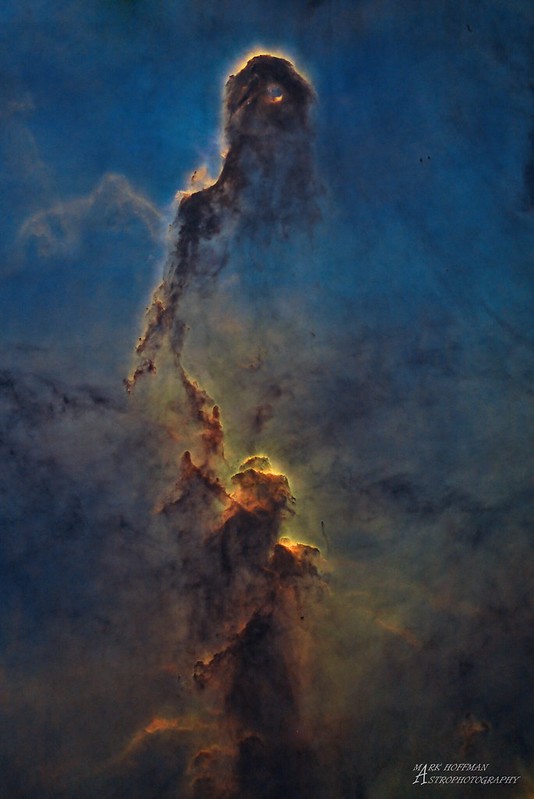
by
mark h, on Flickr
Elephant Trunk Nebula (IC 1396)
Equipment/Capture Details:
Celestron Edge HD8 w/ 0.7x reducer
EQ6R-Pro
Celestron Autofocuser
Celestron OAG
ZWO ASI 174MM
ZWO ASI 294MM Pro
ZWO ASI 7 position EFW
Kendrick Dew Heater
Pegasus Pocket Powerbox
1.25in Chroma 5nm Ha, 3nm O3 filters
Total Integration Time = 26.5 hours
Ha Integration Time = 63 * 600sec
O3 Integration Time = 39 * 600sec
S2 Integration Time = 57 * 600sec
Preprocessed in Pixinsight. Post processed in Pixinsight and Photoshop.
Re: Submissions: 2023 November
Posted: Fri Nov 10, 2023 10:28 pm
by JPeirce
A Snake Swimming Over a Sea of Stars (B72 and friends B68, B69, B70, B74)
Higher resolution:
https://jpeirce.com/stuff/astro/public/ ... 0px_sa.png
Link:
https://flic.kr/p/2pf2yo8 or
https://www.astrobin.com/gntsh4/
Copyright 2023 James Peirce
Date: 2023-Jul-21 (published 2023-Nov-10)
Site: High in the Uinta Mountains, Utah
Telescope: StellarVue SVX080T-35V (0.8x Reducer)
Camera: ZWO ASI2600MC Pro
Filters: Astronomik UV/IR L2
Mount: Rainbow Astro RST-135E
Exposures: 140x90s
Software: PixInsight & Adobe Photoshop
I wanted to capture the beauty of how dense stars become photographing into the core of the Milky Way, and the lovely balance of these dark nebula sort of “swimming” over a sea of stars. I took inspiration from what character this region of space might inspire as a snippet from a well-edited, deep, wide angle photography of the Milky Way.
Re: Submissions: 2023 November
Posted: Sat Nov 11, 2023 12:14 pm
by jose
NGC 253
Hola a todos, por aqui os dejo la galaxia NGC 253 o del Escultor, espero que almenos os guste, estos son los datos
TOMAS:
R: 25 Light de 300 segundos, 25 Darks, 41 Flats y 30 Bias
G: 24 Light de 300 segundos, 24 Darks, 31 Flats y 37 Bias
B: 26 Light de 300 segundos, 26Darks, 26 Flats y 40 Bias
L: 16 Light de 300 segundos, 16 Darks, 30 Flats y 42 Bias
que hacen un total de 7 horas mas 35 minutos
TEMPERATURA: -10 GRADOS
TUBO: FSQ 106 ED
CCD: SBIG ST-8300M
MONTURA: CGEM
CCD guiar: QHY5II
LUGAR: LAS INVIERNAS (GUADALAJARA)
Un saludo
jose
Re: Submissions: 2023 November
Posted: Sat Nov 11, 2023 4:39 pm
by jjpoole741
Shark Nebula (LDN 1235)
Telescope: William Optics GT71
Camera: ZWO ASI2600MC Pro
Integration: 180s x 81 (4 hours 3 minutes)
Astrobin Link:
https://astrob.in/kub8ci/0/
Copyright: John Poole

Re: Submissions: 2023 November
Posted: Sun Nov 12, 2023 8:35 pm
by zombi
λ Centauri Nebula - Running Chicken Nebula - IC2944 / IC2948
 Running Chicken Nebula
Running Chicken Nebula by
.zombi., on Flickr
Imaging telescopes: Takahashi FSQ-106EDXIII
Imaging cameras: Moravian G3-16200EC
Accessories: Reducer-QE 0.73X
Mounts: ZWO AM5
Software: N.I.N.A. · PixInsight · Adobe Photoshop
Frames:
Baader S-II 8nm 50 mm: 5×600″(50′)
SVBony H-alpha 7nm 2": 6×600″(1h′)
Baader O-III 8.5nm 50 mm: 5×600″(50′)
Photographic technique: SHO
Integration: 2h 40'
Bortle Dark-Sky Scale: 1/2
Location: RPA - Blesfontein Guest Farm
Dates: April 20, 2023
Description:
Picture taken in April during an astrophotography safari in South Africa.
Image Credit & Copyright: Przemysław Ząbczyk
Links:
http://www.astrobin.com/users/zombi/
https://www.astropolis.pl/tags/zombi/
Re: Submissions: 2023 November
Posted: Sun Nov 12, 2023 11:19 pm
by kwalker
Sh2-170
Sh2-170 known as the Little Rosette Nebula is very faint in RGB and OIII data but has strong emissions in the Ha and SII narrow band data
the region is 7500 light years from earth located in the constellation of Cassiopeia.
the data was collected over a period of 2 months
most of the data was taken during a full moon and the RGB data was acquired before the moon rose.
SHO added to RGB data
54 hours and 15 minutes acquisition time
Chroma 36mm 5nm filters
SII 45x900
Ha 59x900
OIII 45x900
RGB 34x600 each channel
Stellarvue SVX130T-R
SFFX1 flattener
MallinCam Ds26m Tec
Paramount MYT
SG-Pro
PixInsight
Ken Walker
https://astrob.in/4uh7jg/C/

Re: Submissions: 2023 November
Posted: Sun Nov 12, 2023 11:53 pm
by AmritPrasad
Deep field image of Centaurus A and relativistic jets, (NGC5128)
- Data and processing by: Amrit Prasad
- Acquisition: My Bortle 6 backyard in Auckland, New Zealand
My most recently completed longer term project of the Centaurus A galaxy, NGC5128. This is a deep wide field with 120hours of exposure time. I find it to be an extremely fascinating object with the shell around it, the supermassive black hole, and the mysterious filaments and jet.
Due to the long exposure time, I've managed to capture filaments A, B, C and the Southern Jet which I've marked in the annotated copy, labelling also the nearby galaxies out of the NGC and PGC catalogues. Much to my surprise, there turned out to be around 80 known background galaxies within this area.
I captured all of this from my backyard with a Bortle 6 sky in Auckland, New Zealand between Feb 2022 and late April 2023. I have processed using both PixInsight and Photoshop.
Exposure detail total of 120 hours between:
- 46hrs Ha, 3 minute exposures
- 38hrs Luminance, 1 minute exposures
- 36hrs RGB evenly distributed between each channel, 1 minute exposures
Equipment:
- Telescope: Skywatcher Esprit 100
- Location: Auckland, NZ. Bortle 6 zone
- Camera : RisingCam IMX571, Gain 100/offset 50, -5c
- Filters: Antlia 3nm Ha, Optolong L, RGB filters
- Mount Skywatcher EQ6 Pro/290mm+60mm guide scope
Attached are a closer crop of the galaxy and the filments, a widefield copy, and a widefield annotated copy.
 CentaurusA NGC5128 Widefield
CentaurusA NGC5128 Widefield by
Amrit Prasad, on Flickr
Annotated
 CentaurusA NGC5128 (Annotated)
CentaurusA NGC5128 (Annotated) by
Amrit Prasad, on Flickr
Slightly more intimate cropped view
 CentaurusA NGC5128 (Closeup)
CentaurusA NGC5128 (Closeup) by
Amrit Prasad, on Flickr
Re: Submissions: 2023 November
Posted: Mon Nov 13, 2023 12:43 am
by Altrmike
Re: Submissions: 2023 November
Posted: Mon Nov 13, 2023 12:50 pm
by Wolfgang
PGC2248
Copyright: Wolfgang Promper
https://www.astrobin.com/4t4vss/
Re: Submissions: 2023 November
Posted: Mon Nov 13, 2023 4:02 pm
by felipeservulo
Location: Parque Nacional da Serra do Teixeira, Matureia, Paraíba, Brazil (the highest point in Paraíba)
Camera: Canon EOS 600D
Lens: 75-300 mm in 300 mm
Exposure time: 1/640 sec. f/11
ISO 800
https://www.flickr.com/photos/199506216 ... ted-public

Copyright: Felipe Sérvulo
Click to view full size image
Re: Submissions: 2023 November
Posted: Mon Nov 13, 2023 7:09 pm
by matuutex
Desolate tree and Orion nebula.
Copyright: Marcelo Maturana Rodríguez (@matuutex)
Location: LLanquihue National Reserve, Lakes Region, Chile
Date: 05 January 2022
Instagram: @matuutex
Nikon d5600, Tokina lens 14/20mm f2
Tree: 14mm f2 iso 1600 200 segs
Orion Nebula: 300mm 60 lights of 120 segs iso 600
In the photograph we can see the constellation of Orion along with its nebula of the same name, the Orion belt stands out with the brightest stars (Alnitak, Alnilam and Mintaka) next to a coigüe tree, typical of the temperate forests of southern Chili.
This tree appears dry and desolate due to the eruption of the Calbuco volcano in 2015. In this area (LLanquihue National Reserve) we can see a desert and desolate landscape due to the tongue of pyroplastic sediment fallen in the place.

Desolate tree and Orion nebula. by
Marcelo Maturana, en Flickr
https://live.staticflickr.com/65535/533 ... 86ea_h.jpg
Re: Submissions: 2023 November
Posted: Tue Nov 14, 2023 4:50 am
by PatrickWinkler
Re: Submissions: 2023 November
Posted: Tue Nov 14, 2023 5:00 pm
by sergio.diaz
Full-size image:
https://sergiodiaz.eu/public/2022-09_Or ... terisk.jpg
(YouTube:
https://www.youtube.com/watch?v=nSZGaqAdTDk)
(Download as webm:
https://sergiodiaz.eu/public/2022-09_Or ... _anim.webm)
Two-panel HDR mosaic of the southern region of the constellation of Orion from La Palma (Canary Islands, Spain). The pictures were taken a few days apart, just before and after the passage of the tropical substorm Hermine in late September 2022. The atmospheric conditions, with thin high clouds, almost entirely saturated in water vapour and under a strong skyglow, posed quite a challenge not only for capturing but also for processing this image.
However, I was fortunate enough to capture this gorgeous meteor with a debris bubble emerging from it in one of the exposures. The bubble moved away in subsequent exposures, as can be seen in the timelapse.
Modified Canon EOS 6D at ISO 1600 and a Samyang 135mm f/2 ED UMC lens, stopped down to f/2.8, sitting on an Astrotrac TX320X-AG tracking mount and a Sirui AM-284 tripod. All the processing workflow was made with PixInsight, including calibration and HDR integration for each panel, mosaic stitching, and postprocessing. The meteor subexposure was post-processed separately and then blended into the final image.
Image Credit & Copyright: Sergio Díaz
Re: Submissions: 2023 November
Posted: Tue Nov 14, 2023 6:26 pm
by bluvega
The Shark Nebula (LDN 1235)
Light: 123x300" (10h. 25m.)
Telescope: Takahashi FSQ85EDX
Camera: Qhy268c
Mount: Ioptron ieq45-pro
Software: N.I.N.A., PixInsight, Photoshop
Location: Stigliano (Italy)
Copyright: Salvatore Cozza (
bluvega@gmail.com)
 The Shark Nebula (LDN 1235)
The Shark Nebula (LDN 1235) by
Salvatore Cozza, su Flickr
Re: Submissions: 2023 November
Posted: Tue Nov 14, 2023 6:57 pm
by TheJohnny22
Heart and Soul
Have you ever met a person with whom you share your heart and soul? I've met one, and since my hobby is astrophotography, I've decided to use it to create an unforgettable photo. This is a composition of two images: the wide starfield containing the Heart and Soul nebulae, and the flowery meadow where I am standing with my partner. The Heart and Soul Nebula are one of the first objects which started my adventure with astrophotography, and also one of the first ones that I pointed binoculars at while trying to spot them with my boyfriend. Nebulae are relatively dark, but the camera can reveal the true beauty of these objects. Stargazing together will always be romantic.
The starfield was stacked in Deep Sky Stacker, then processed in Siril, StarNet++, and Photoshop. The landscape was preprocessed in Photoshop and then combined with the starfield. Two gradients were added in order to simulate a low horizon hue, to make the composition look more realistic.
starfield:
20 subs, 240 sec each (1h 20min); ISO 800
Canon EF 50mm f/1.8 STM, at f/2.8
Neq6 pro beltmod
Canon eos 1200d mod + filter CLS
Landscape:
1 sub 1/800 sec, ISO 400
Canon eos 1200d mod
Canon EF 50mm f/1.8 STM, at f/1.8
Author: Jan Stachowiak
Time: 02.11.23
Place: Karczyn, Poland
Re: Submissions: 2023 November
Posted: Tue Nov 14, 2023 7:31 pm
by Galactic-Hunter
The Hyades 6-panel mosaic with Taurus Molecular Cloud Complex (TMC-1).
 The Hyades and Space Dust
The Hyades and Space Dust
This is a 6-panel mosaic of the Hyades, showing a lot of space dust in the background. It totals 48 hours of exposure time. This dust, sometimes mistaken as IFN, actually comes from within our Milky Way galaxy and comes from the Taurus Molecular Cloud Complex (TMC-1) which is also visible around the Pleiades and the California Nebula.
The total size of this image is 118 MegaPixels. The image also shows Sh2-239 and NGC 1555 at the top, as well as the bright star Aldebaran.
The Hyades is the closest open cluster to Earth, located in Taurus just 153 light-years away. It is so huge that it is not possible to fit in the field of view of a telescope, hence the mosaic! I am very happy with how much dust I was able to bring out.
Full blog post with much more information:
https://www.galactic-hunter.com/post/the-hyades
Credit: Antoine Grelin |
www.galactic-hunter.com
Re: Submissions: 2023 November
Posted: Tue Nov 14, 2023 9:03 pm
by MallowFDT
ELT Moonrise
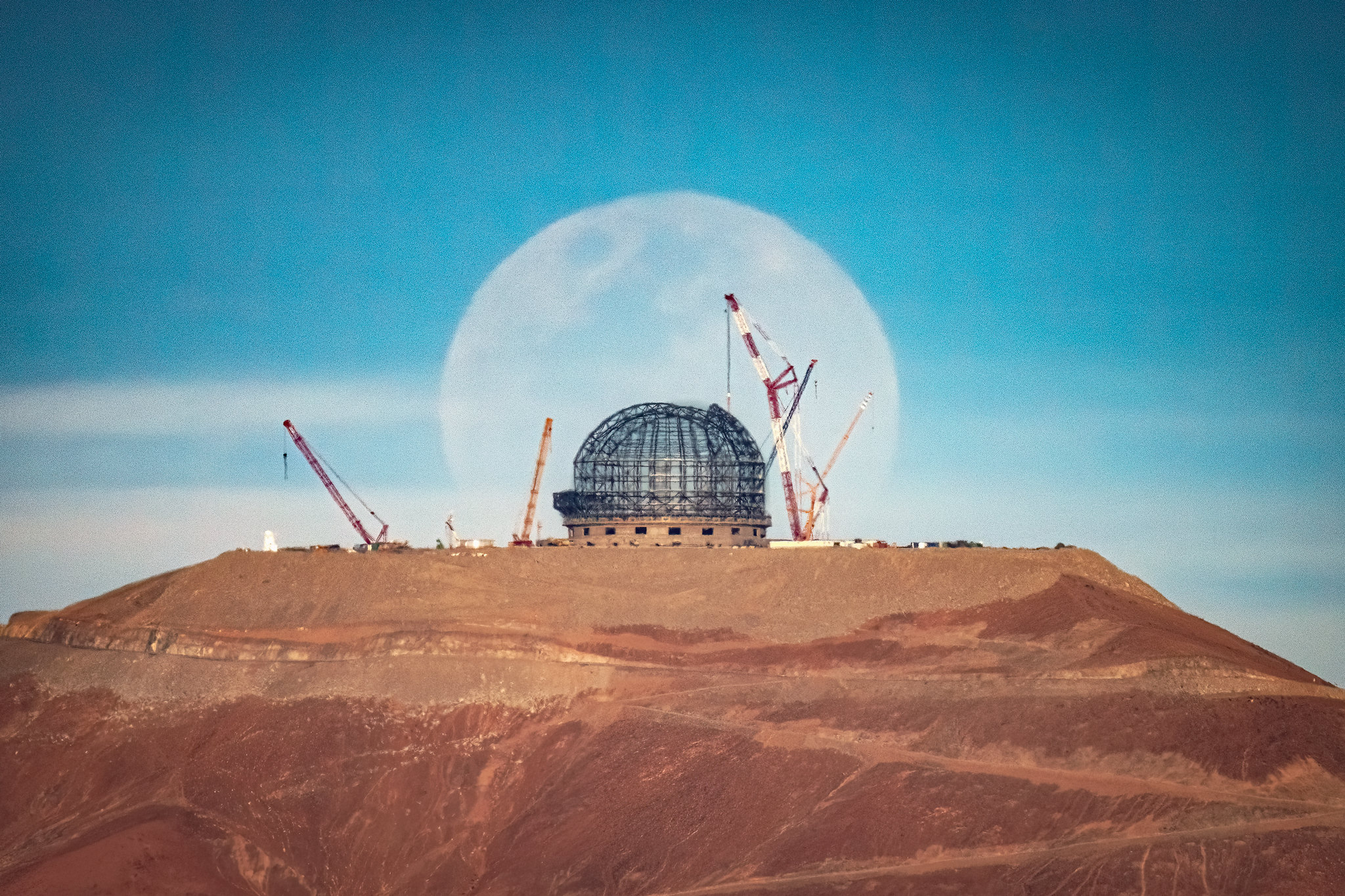
Transit of a full moon rising behind the ELT dome structure, captured from Paranal Observatory on October 27th of this year.
ELT Moonrise by
Eduardo Garcés, en Flickr
Jupiter - GRS, Oval Ba
Posted: Wed Nov 15, 2023 6:47 pm
by Efrain Morales
Jupiter - GRS and Oval Ba showing a bright yellow core. ( LX200ACF 305mm OTA, CGX-L Mount, ASI533mm Pro Cmos, PowerMate 2.5x Barlows, EFW8, Astronomik RGB Filter set.)
Re: Submissions: 2023 November
Posted: Wed Nov 15, 2023 9:15 pm
by pineta1984
In the vast canvas of the cosmos lies the mesmerizing Cocoon Nebula, a celestial cradle where new stars are born. This image captures the essence of this stellar nursery, where clouds of gas and dust weave tales of creation. The Cocoon Nebula, is located approximately 4,000 light-years away in the Cygnus constellation. Its peculiar name comes from the dark band of dust that gives it the appearance of a cocoon, enveloping the nascent stars within.
The photo is a sum of about 19 hours of exposure time with:

: zwoasi ASI 6200 mono

: Tecnosky fast 300 mm - 12''

: zwoasi OAG and ASI 120 mini

: chromatechnology RGB
⚙: ioptron_telescopes CEM 120
Image taken by Alex Battu' and Luca Barcaro
 B168 Coccoon_out
B168 Coccoon_out by
Astro Divers, su Flickr
Re: Submissions: 2023 November
Posted: Thu Nov 16, 2023 11:50 am
by sjbastro
Sirius stretched
This is a shot showing the colours of a twinkling Sirius, stretched out to make them move visible. To make this image I took a 1.6 second exposure of Sirius and during the exposure I moved the camera horizontally. This resulted in Sirius becoming a stretched-out line on the final image. I then edited this in Photoshop to stretch it out to the size of the full picture, thereby making the many different colours of the twinkling more visible. What I find fascinating about this method is not only the striking image it creates but the many different colours that can be seen. More and more tones can be seen as you zoom into the image. I used a Canon 550D DSLR with 300mm lens at f/5.6, ISO-800 on a static tripod. Shot taken on 7 November 2023.
Copyright: Steve Brown
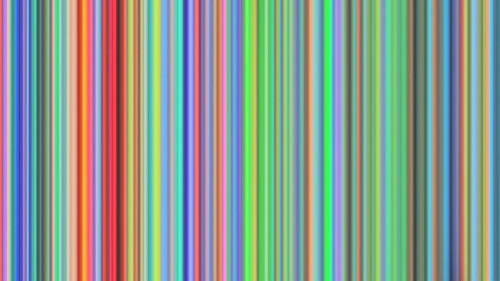 Sirius stretched
Sirius stretched by
Steve Brown, on Flickr




